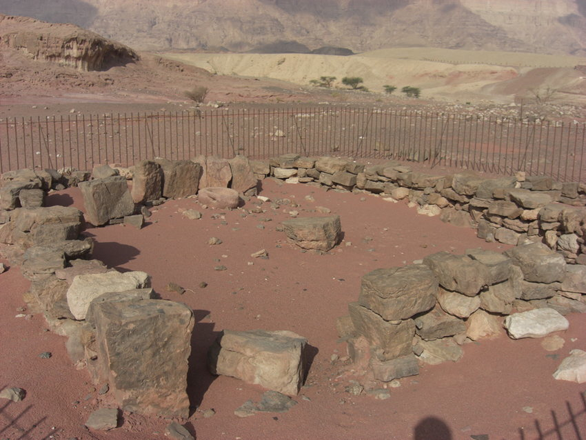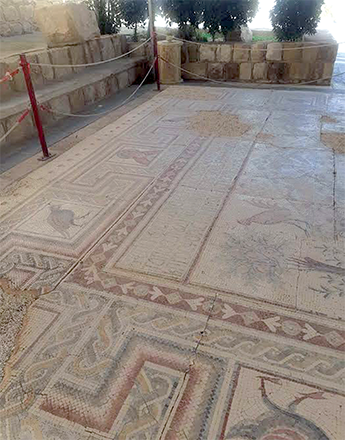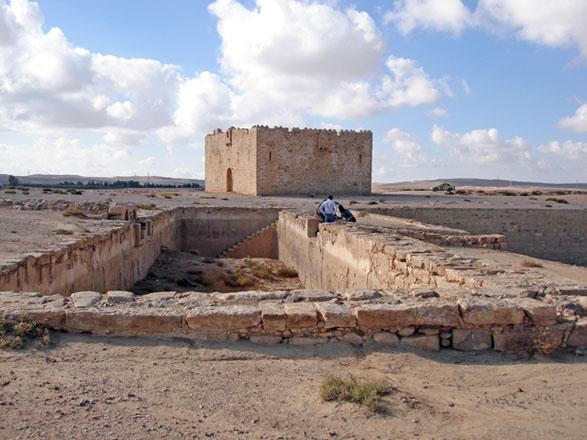You are here
Deep dive into ancient pilgrimage routes in Levant, Hijaz regions
By Saeb Rawashdeh - Mar 27,2024 - Last updated at Mar 27,2024

A Nabataean temple in Wadi Rum (Photo courtesy of Juan Tebes)
AMMAN — Pilgrimage routes in the Levant and Hijaz have been a topic of research for the past decades when archaeologists and historians studied the available evidence. Juan Tebes, an Argentinean scholar specialised in Ancient Near East History at the Catholic University of Argentina and Director of its Centre for Studies of Ancient Near Eastern History, has been studying the society and cultic practices in the southern Levantine arid margins (Edom, Naqab) and north-western Arabia (Midian) from the Iron Age to the Roman period.
The textual sources and archaeological evidence provide abundance of information about pilgrimage routes and religious practice of the region. During the 1st century BC, the pilgrims would go to Jerusalem to practice their rites, which attracted a large number of pilgrims from the neighbouring areas.
“We know that the king Herod constructed and renovated sacred sites in the southern part of his kingdom, such as the Cave of Machpelah (also known as the Cave of the Patriarchs) and the temple of Mamre, but they never rivalled with Jerusalem as centres of pilgrimage,” noted Tebes, adding that there were lesser-known visits to holy places or “holy men” of regional significance.
Before archaeology became a more developed science, researchers used to rely mostly on written sources that came from a small group of literate and educated people.
“Fortunately, the text-centric picture can be counterbalanced by the plenty of archaeological evidence showing that sacred travels were also present in the arid regions of the Sinai, Naqab, southern Jordan and probably northern Arabia,” Tebes said, adding that the evidence of sacred travels harks to thousands of years, as early as the Neolithic period, but scholars can only put a name to this phenomenon with the extensive use of writing among the local peoples.
Locals would go to pagan, Judaist, Christian and Muslim pilgrimage.
“The Nabataean state and local powerful families sponsored sacred travels to places considered holy, such as the ones performed to the temples of Jabel Haroun [close to Petra], Khirbet et-Tannur [north of Tafilah], and Wadi Ramm,” Tebes said, adding that Petra itself was the focus of pilgrimage, as it is attested in the Obodas Chapel or the high-places of Jabel Numayr and Jabel Khubthah.
One little known aspect are the private sacred travels performed by Nabataeans in the Sinai, as attested by the dozens of rock inscriptions and two sanctuaries discovered in the Wadi Feiran area in south-central Sinai, Tebes elaborated, adding that sacred travels in Sinai certainly predate the better-known Christian pilgrimage, and it is possible that Christians reinterpreted the local sacred places under the light of their own identification of the area as Mount Sinai.
The same probably happened with the re-identification of Jebel Haroun as the burial place of Aaron, Moses’ brother, the professor said.
Regarding the north-western Hijaz, evidence is scarcer and the most recent archaeological projects in the northern Hijaz will reveal some historical evidence about pilgrimage sites and practices in the ancient times.
“This tradition was certainly picked up by the Christians and early Muslims, and now we can see several sites around al-Bad‘ associated with Moses and his family, such as Magha’ir Shu‘ayb [‘Caves of Shu‘ayb’, Moses’ father in-law] and Bir Sauaidani [‘Moses well’],” Tebes underlined.
To organise successful pilgrimage, the way stations were essential in often inhospitable desert.
“When we picture desert waystations in our mind, we always think first about the large network of stopping places that dotted the routes of the Islamic Hajj, which had a great level of organisation and resources at their disposal. Although before Islam there was nothing of this sort, there were important antecedents,” Tebes highlighted, noting that the earliest structure probably built to host people traveling in sacred travels was an Iron Age site called Kuntillet ‘Ajrud, now in the north-eastern Sinai.
Hundreds of articles and books have been written about this site, but although it is clear that it was connected with some sort of Israelite cultic activities in the 9th century BC, we don’t know why and where those visitors were travelling to.
The Roman and Byzantine periods were a turning point and a whole new range of facilities were built in the Sinai and Naqab for pilgrims travelling to Mount Sinai, including monasteries and churches, most of them in ancient Nabataean sites such as Sobata, Nessana, Rehobot, and Oboda, in the Naqab.
“These pilgrim routes followed ancient trade routes, which, in turn, were also used by the later Hajj travellers,” he said.
Talking about plans for the upcoming period, Tabes said that one way of tracking presumably ancient trade and sacred routes is with the use of geospatial technology, a relatively new technology used in the archaeology of the arid southern Levant and northern Arabia.
“I am currently working with a project called The Desert Cults Mapping Project, which aims to study the local sacred landscapes by using geospatial technology, archaeological data and historical sources,” Tebes explained, adding that the main output will be an open-access digital database with associated map listing all the local cultic and mortuary sites from the Neolithic to the Early Islamic period.
“So far, I have listed more than 5,000 sites. They include open-air courtyard sanctuaries, high-places, rock-shelter spaces, Christian churches, Islamic mosques, tumuli, burials and standing-stone sites,” Tebes emphasised.
Related Articles
AMMAN — The religion of the people who lived in the Syro-Arabian Desert and the steppes during the final phase of the Late Bronze and the Ir
AMMAN — During the 3rd century AD, monks established the first monastic centres in the Levant, drawn to this region for its suitability for
AMMAN — Before large-scale development and air travel, the Hajj pilgrimage routes comprised mostly of dirt roads, but according researchers,














